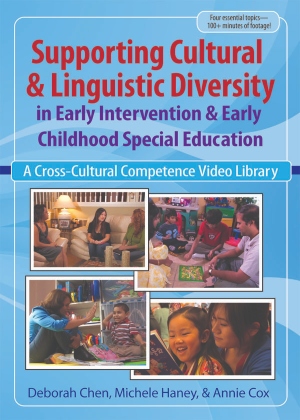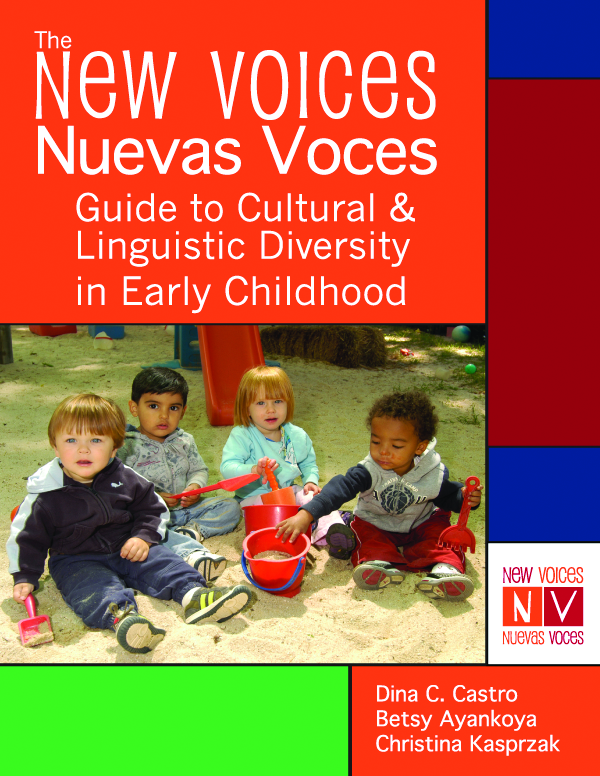Creating Culturally Responsive Classrooms and Practices

“Our students are our best cultural resources, and if we want learners who are knowledgeable and resourceful, it begins with us showing them that we value the knowledge and resources they come with.”
—Joni Degner, UDL facilitator, guest post on the Brookes Inclusion Lab blog
As an early childhood professional, there’s so much you can do to embrace and promote culturally responsive practices: examining your own biases and values, learning about child-rearing practices across cultures, stocking your classroom with diverse books and other materials, and giving children a chance to talk about their home culture and traditions, just to name a few.
Use the recommended resources on this page to help ensure that you’re supporting children and families in culturally sensitive and responsive ways.
Articles and other online resources:
How UDL Can Help You Create Culturally Accessible Classrooms (Brookes)
UDL facilitator Joni Degner talks about what it really means to be “culturally responsive” as a teacher, and how adopting a UDL approach can help.
14 Resources for Diverse Books and Materials (Brookes)
Get links to 14 helpful resources you can use to ensure that your bookshelves and teaching materials reflect diversity—both within your classroom and in the world around us.
5 Classroom Elements that Provide Opportunity for Dual Language Learners (Brookes)
This tip sheet identifies 5 elements you should implement in your classroom to boost opportunity for young dual language learners.
Supporting Cultural Diversity in Early Childhood (Brookes)
Find key strategies for supporting cultural and linguistic diversity in early childhood intervention and early childhood special education.
Explore the Toolkit
- Screening and Assessing Culturally and Linguistically Diverse Children
- Supporting Dual Language Learners
- Understanding and Working with Families
- Creating Culturally Responsive Classrooms and Practices
- Promoting Acceptance and Friendship
- Shareable Quote Graphic Library
Building Positive Cultural Identities in the Preschool Classroom (The Preschool Podcast)
In this podcast, Zeynep Ercan, Associate Professor in Early Childhood Education at Rowan University, offers strategies to support immigrant families and their children in the classroom.
Checklist: Planning for a Multicultural Child Care Environment (Inclusive Directions)
This checklist for child care programs is a good tool for assessing your current multicultural practices and understanding areas of strength and areas that need improvement.
Creating Environments that Include Children’s Home Languages and Cultures (Head Start ECLKC)
This tip sheet offers some great tips and ideas for how to include children’s home languages and cultures in the classroom environment.
Selecting and Using Culturally Responsive Children’s Books (OHS National Center on Cultural and Linguistic Responsiveness)
Download this tip booklet for some practical guidance and insight on choosing more culturally diverse children’s books for your classroom.
Dual Language Learners with Disabilities: Supporting Young Children in the Classroom Module (IRIS Center)
This one-hour module discusses screening and assessment, supporting home language while children are learning English, and more.
Pyramid Model Practices Implementation Checklist (NCPMI)
This 11-page checklist can help programs ensure that they’re implementing Pyramid Model practices with fidelity in their classrooms.
Recommended for you:
Improve the cross-cultural competence of early interventionists and special educators with this complete professional development resource. This single convenient DVD covers 4 essential topics and includes 15 printable forms, activities, and discussion questions.
Developed by respected scholar Dina Castro and her expert team, this five-module professional development course is the key to working effectively with diverse children and families. The handbook includes thorough coverage of each module, and the facilitator’s manual on CD-ROM offers a complete professional development package.
Need training on the importance of culturally responsive practices in early childhood programs? Invest in this convenient online ePyramid training module: Culturally Responsive Practices to Reduce Implicit Bias, Disproportionality, Suspension, & Expulsion. Features 2 hours of high‐quality, evidence‐based instruction!




